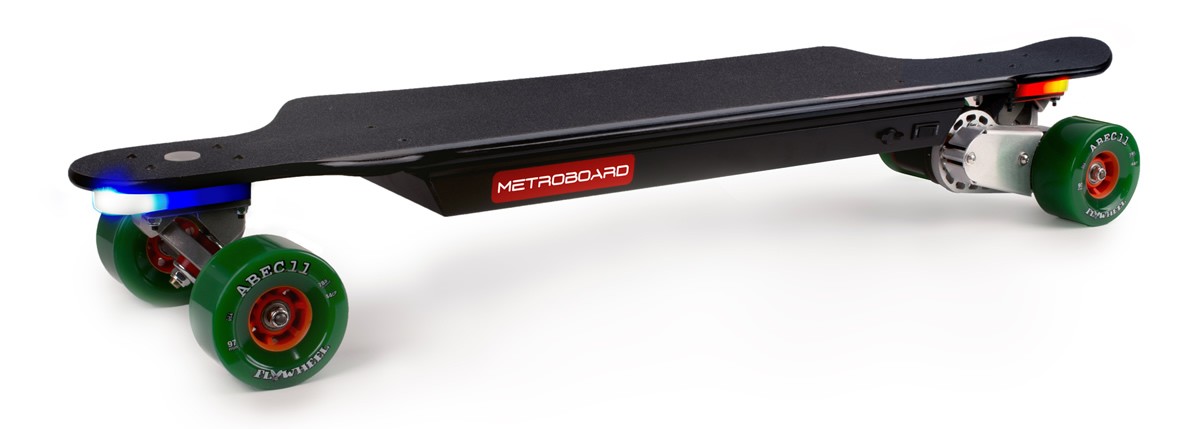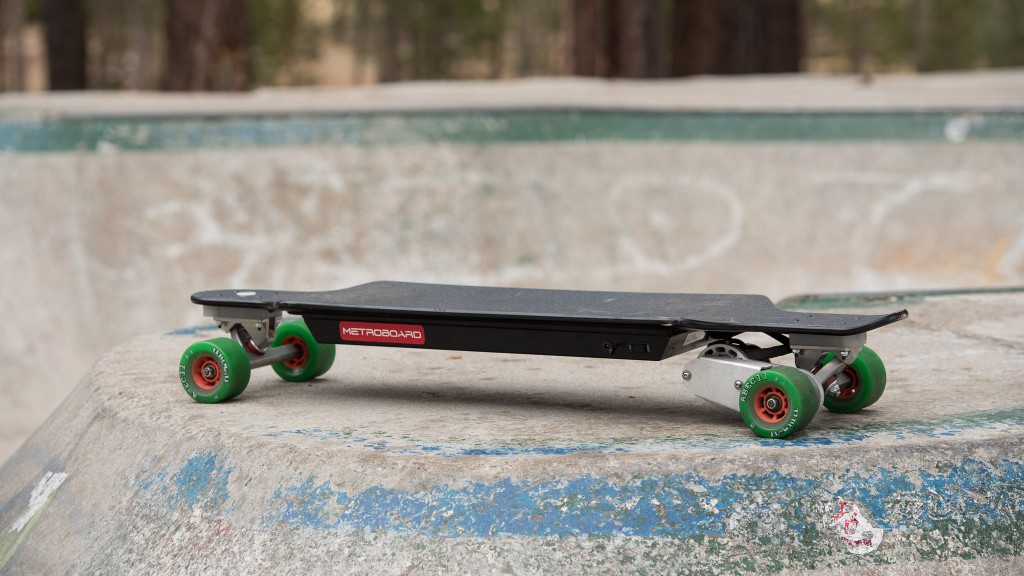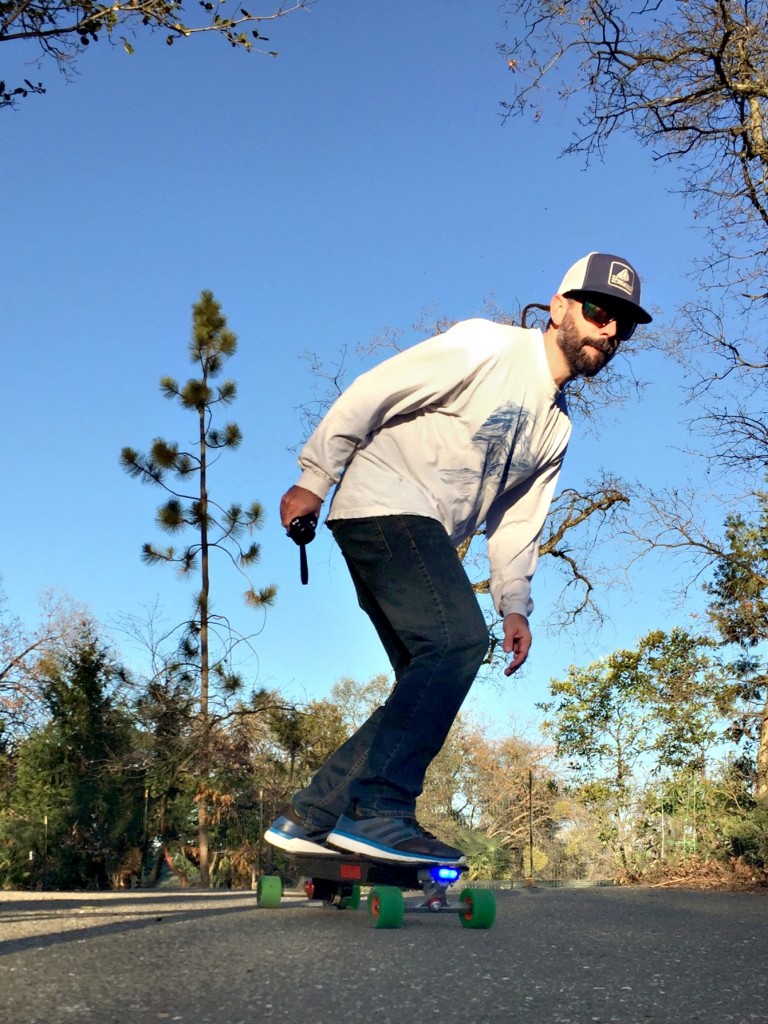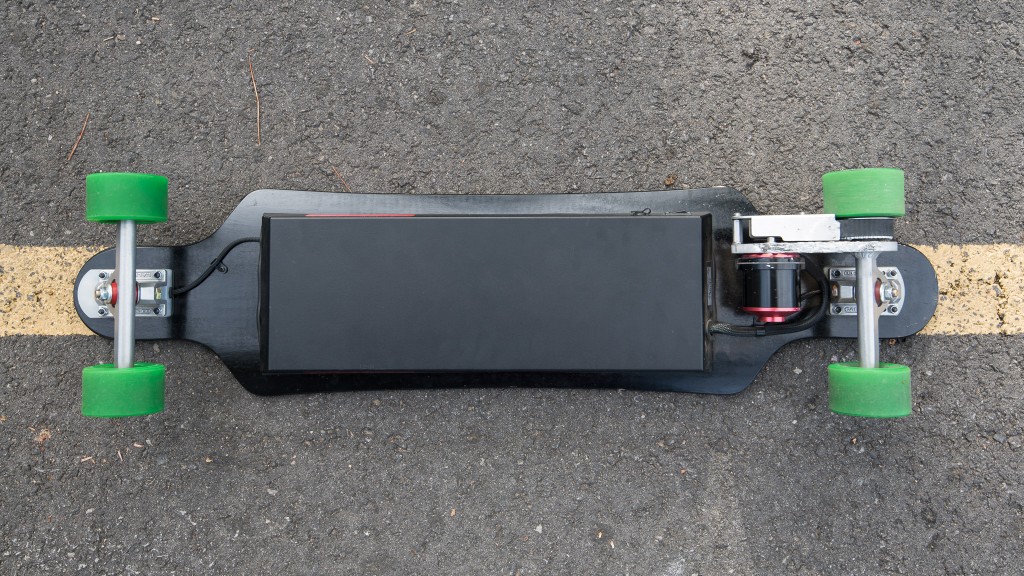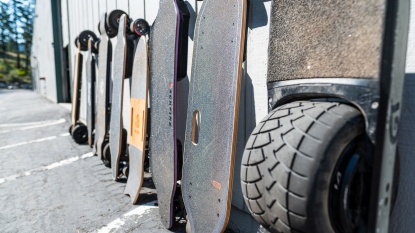Metroboard Slim Stealth Edition Review
Our Verdict
Our Analysis and Test Results
An updated, two-wheel drive version of this board is now available. With the base model retailing for about $600 more than the base model of the one-wheel drive version, this newer model is significantly more expensive. However, the two-wheel drive purportedly has a top speed of 24 mph and a range of 25 miles, putting it at the top of the pack. Unfortunately, it appears that this new board still has the same clearance issues that plagued the original product, made even scarier by the fact that you are going even faster. Having the motor mounts or belt guard suddenly drag and catch on rougher roads could cause quite a serious accident and we could advise caution when riding either of these on rougher roads. We haven't tested the two-wheel drive version yet, but we will further update this when we do.
The Metroboard is a solid performer and earned the third highest score out of all the boards. It was respectably fast and made it up most of the hills in our test. We had a few issues with the build on this board, but it's all around a great board. Unfortunately, the retail price is a little on the higher side, and it's not that much more expensive to get one of the top scorers.
We rode all of these products mile after mile and put them through a barrage of tests to see which one came out on top.
Speed
Speed was our most important metric, comprising 25% of the total score. This score was determined by the results of two tests, tested maximum speed, and acceleration. The Metroboard did fairly well, earning an overall score of 6 out of 10. First, we determined the top speed of each model. We gave the Metroboard plenty of runway to build up to its top speed, then timed how long it took to complete a 200' test section.
This board hit a respectable 17.65 mph. Our acceleration test was conducted in a similar way, except the board was started from a standstill. This board did very well and had great acceleration, but the one-wheel drive proved problematic.
This board had a tendency to want to burn out and refuse to drive in a straight line if you weren't prepared for it.
Range
This metric was also scored with two tests, the first being how far the board traveled in a medium riding profile, and the second, how long it took to charge the board. This board took home the top score in this metric with an 8 out of 10. It traveled the furthest out of all the boards.
This board traveled 23.4 miles in total, with the board slowing down a little bit at the halfway point, and severely dropping the speed for the last 4 miles or so. This board took around 2 hours, 40 minutes to recharge after being completely depleted, in line with the manufacturer's claimed time of 1-3 hours.
Ride
The Metroboard delivered an above average performance in this metric, earning a 6 out of 10. We assessed how drawn to the board we were, how comfortable it was to ride, how it handled bumps in the road, and whether or not an unexpected crack threw you for a loop. The Metroboard is a stable performer, and we were quite content to grab this board for a quick errand. It's comfortable to ride and handles bumps and uneven roads relatively well. However, this board has exceptionally low clearance on the motor mount and is prone to bottoming out on cracks, leading to some unpleasant noise and less than attractive scuffs on the underside of the board.
Hills
This metric's score was based entirely on a single test: How steep of a hill could this board climb? In the case of the Metroboard, we found it failed at the 23% test slope, but excelled at the 15% one, earning it a 7 out of 10. This board held its own, and while it was the slowest of the boards that made it up the 15% grade to reach the summit, it still made it. The single motor powertrain made it about 6' up the 23% hill — not enough to qualify as a pass.
Build
The Metroboard had an average build score of 5 out of 10. This was based on the board's weight, the ergonomics of the remote, how responsive the board was to the remote, if the board had regenerative braking, and whether or not the customer support was actually helpful.
This board does have regenerative braking, but it lost quite a few points by being one of the heavier models that we tested, weighing in at 18.9 lbs. This is significantly more than some of the other modes.
The remote felt alright, but it seemed a little cheap to us. It is powered by a pair of AA batteries and has 9 different riding modes to choose from. It responds quickly to inputs from the remote. We struggled to contact this company via phone, but there are contact email and mailing addresses to reach them. There is a 6-month warranty and a 7-day return policy, the full details of which can be found on their website.
Braking
The Metroboard did slightly above average in our braking test, earning a 6 out of 10. We determined this score by how well the board did at controlling our descent speed when heading down a hill, and how quickly we could stop from a medium speed on flat ground.
This board did a good job of slowing down to almost a complete stop on the 15% grade but had a tendency to fishtail around a bit on the steeper hills. You would still slow down, but you sacrifice a ton of control. This board took about 39' to stop when traveling about 12 mph. This wasn't the shortest stopping distance.
Value
This board is a little on the pricey side to be a value pick, but it might be a good option if you want to save a little from the top scorers.
Conclusion
This board delivered a runner-up performance at a runner-up price tag. It lagged behind the top scoring model by a bit but was between $150-$200 less expensive. This board is a strong performer, and won't let you down, but it can get stumped by the steeper hills. All in all, this is a great board — not the top performer, but not the most expensive.


